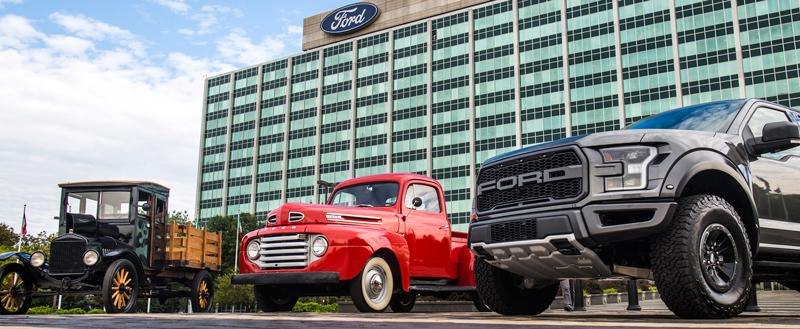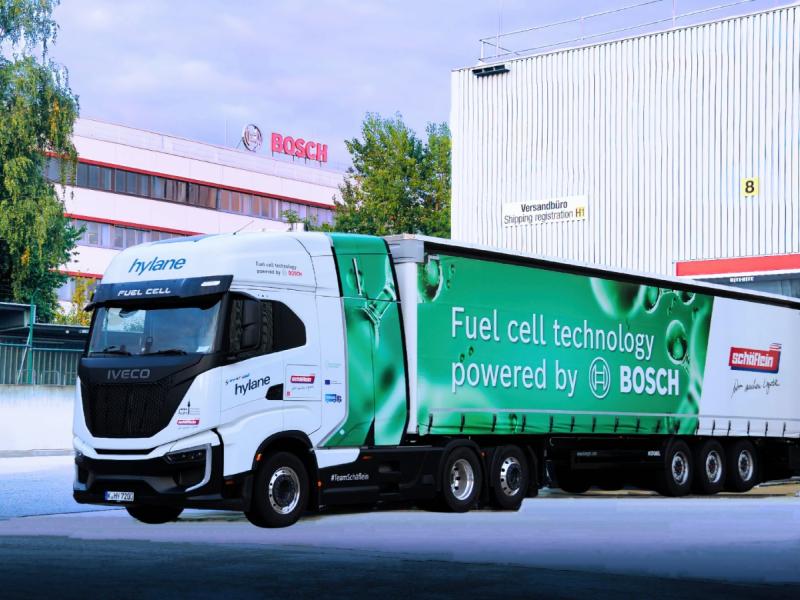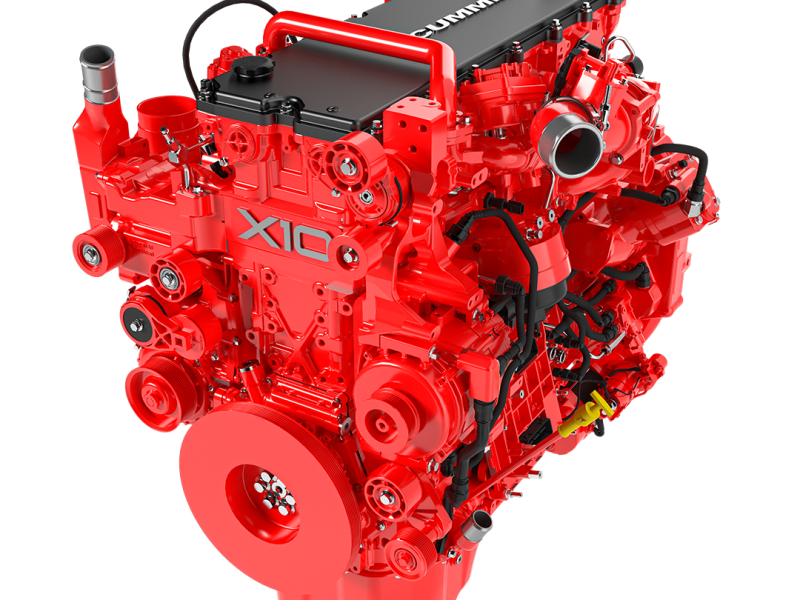One hundred years ago on July 27 Ford introduced its first purpose-built truck, the 1917 Ford Model TT, forever changing the motor industry – and the very nature of work itself.
A century later, Ford trucks are among the most iconic vehicles in the world. The F-Series has been America’s best-selling truck for 40 consecutive years and best-selling vehicle for 35 straight years. In Canada, Ford F-Series has enjoyed 51 consecutive years as best-selling pickup and now marks seven straight years as best-selling vehicle.
Throughout this rich history, Ford continuously has worked to improve its trucks by listening to truck owners and developing new innovations that improve their ability to get the job done. These innovations give today’s Ford truck owners greater towing and hauling capability, advanced engines for improved efficiency, and driver-assist technologies that make it easier and more convenient to operate.
Nine years after the first Model T saw Ford customers asking for a vehicle that could haul heavier loads and provide greater utility for work and deliveries. On July 27, 1917, Ford responded with the Model TT, which retained the Model T cab and engine. The Model TT came with a heavier-duty frame capable of carrying one ton of payload. The factory price was US$600; 209 were sold that year.
Similar to the Fordson tractor introduced in 1917, Henry Ford envisioned a chassis that could accommodate third-party beds, cargo areas and other add-ons to deliver the increased functionality needed to get work done. It was a formula for success. By 1928, Ford had sold 1.3 million Model TTs before replacing the truck with the more capable Model AA with a 1.5-ton chassis.
Like the Model TT, the Model AA was available exclusively as a chassis cab offered in two lengths, with new powertrain and axle options for greater capacity.
To stay ahead in what had become a hotly competitive business, Ford replaced the Model AA with the even more capable Model BB in 1933. Many were outfitted as mail and freight vehicles, ambulances and stake trucks. Two years later, Ford introduced the 1935 Model 50 pickup, powered exclusively by its famous Ford Flathead V8 engine.
By 1941, Ford had sold more than 4 million trucks. Changing over to war production resulted in the loss of consumer sales but a gain in experience building heavy-duty military truck chassis and four-wheel-drive personnel carriers. A year after consumer production resumed in 1947, Ford leveraged that knowledge to provide even more innovations for its customers.
This first-generation F-Series covered Classes 2 through 7 capacities – from the half-ton F-1 to the much larger F-8 cab-over truck.
With the arrival of the second-generation F-Series for 1953, Ford increased engine power and capacity, and rebranded the series.
The F-1 became the F-100, while F-2 and F-3 trucks were integrated into the new F-250 line. F-4 became F-350. Class 8 trucks were spun off into a new C-Series commercial truck unit that produced iconic C-, H-, L-, N-, T- and W-Series Ford trucks.
Then, in 1957, Ford tested out a car-based truck – the Falcon Ranchero. Marketed as “More Than a Car! More Than a Truck!,” this light-duty truck brought car-like amenities to consumers.
Creating the Built Ford Tough brand In 1961 – 44 years after the Model TT – Ford introduced its fourth-generation F-Series.
The company’s revolutionary twin I-beam front suspension debuted in 1965. An upscale Ranger package appeared in 1967. Ads emphasised improved comfort, value and
durability, as Ford trucks now offered power steering and brakes, and a lower chassis profile. A larger SuperCab option introduced in 1974 featured more comfortable seating to attract dual-purpose work and family buyers.
With the arrival of the sixth-generation F-Series in 1975, Ford dropped the popular F-100, replacing it with a higher-capacity F-150 pickup to combat the C/K trucks from General Motors. By 1977, F-Series pulled ahead in the sales race, and 26 million trucks later, Ford hasn’t looked back.
Trucks were fast becoming universal family vehicles, in addition to being work trucks. Instead of renting a truck for a big job or for towing, people now had ones they could use for work during the week, then hitch a trailer to and haul the family in for weekend getaways. Ford trucks were adapting to the changing, more active American lifestyle.
Premium edition trucks, such as the Lariat package introduced in 1978, offered more comfort features including air conditioning, leather trim, and power windows and locks. In 1982, Ford charted a different course with an all-new compact truck – Ranger.
Versatile and efficient, Ranger quickly built a reputation for being tough and capable, leading it to thrive in diverse markets around the world. Now, after a seven-year hiatus, Ford is reintroducing an all-new Ranger in North America in 2019.
Ford reset the benchmark again in 1998 with the introduction of F-Series Super Duty. Engineered for fleet and heavy-duty work use, Super Duty – from the F-250 all the way up to the F-750 – more clearly defined Ford trucks for a growing base of commercial applications.
While Ford worked to continuously increase truck capabilities, the company made bold investments in efficiency, too. Powerful, yet efficient EcoBoost V6 engine technology debuted for 2011, providing customers with better fuel economy and power.
This was followed by the industry’s first high-strength, military-grade, aluminium-alloy body for the 2015 F-150, providing customers the “and” solution of greater efficiency and more capability. Two years later, 2017 Super Duty trucks also got lighter-weight high-strength, military-grade, aluminium-alloy bodies – a savings Ford reinvested in providing best-in-class towing and hauling capability.
Innovation on the performance front continued, too, with Ford leading the way in the specialty truck segment. Early examples include Harley-Davidson F-150 and F-150 SVT Lightning. Then came Raptor – the first off-road trophy truck from a major manufacturer.
Inspired by desert racing and designed specifically to meet the needs of off-road truck enthusiasts, the purpose-built F-150 Raptor set the bar high for off-road performance.
Today’s second-generation 2017 F-150 Raptor features a 336kW EcoBoost V6, 10-speed transmission, and segment-exclusive Terrain Management System with electronic-controlled transfer case and differentials.






